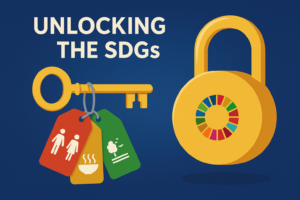Key Points:
- Data Demand: Global stakeholders are calling for more rigorous sustainability data, prompting companies to enhance their ESG (Environmental, Social, and Governance) disclosures.
- Change Management: Organizations face challenges in adapting to detailed ESG reporting, but successful change management can drive innovation and value creation.
- Strategic Integration: Companies can achieve business transformation by embedding ESG and climate considerations into strategy and decision-making processes.
As regulators, investors, and stakeholders worldwide increasingly demand more rigorously produced sustainability data, companies are recognizing the strategic importance of climate change. This has led many organizations to develop plans to reduce emissions and manage climate-related risks and opportunities.
For companies, complying with these demands for more detailed and comprehensive ESG disclosures represents a significant change management challenge. However, those that successfully navigate this challenge can unlock transformational opportunities by leveraging ESG data and improving supply chain transparency, which can drive innovation and competitive advantage.
Leveraging Change Management for ESG Integration
In a recent discussion, Kristen Sullivan, the U.S. Sustainability and ESG Services Leader for Deloitte & Touche LLP; Jeff Schwartz, an audit and assurance partner with Deloitte & Touche LLP; and Aaron Uddin, a managing director and leader with Deloitte’s Sustainability Transformation practice with Deloitte Consulting LLP, highlighted three key initiatives for integrating sustainability into strategy and decision-making:
Conducting a Materiality Assessment
- Organizations need to identify the most relevant and impactful ESG and climate issues for their business and stakeholders. This involves assessing materiality to capture risks and opportunities, driving consensus on common language, roles, responsibilities, awareness, education, and accountability.
Performing a Readiness Assessment
- Evaluating the current state of capabilities, data, processes, technology, and governance for sustainability reporting and disclosure is crucial. This readiness assessment can highlight gaps in compliance and reveal market opportunities for strategic growth.
Developing a Strategic Roadmap
- Companies should define a vision, governance, goals, priorities, and actions to improve ESG and climate performance and reporting. A strategic roadmap can help organizations align senior executives and the board on the importance of sustainability to the organization.
Change Management and Talent Considerations
Jeff Schwartz emphasized that companies excelling in climate and ESG reporting are often led by boards and C-suite leaders who prioritize it as a strategic imperative rather than a compliance exercise. “They drive fundamental change from the top of the organization,” Schwartz noted.
Kristen Sullivan pointed out that regulatory reporting can serve as an accountability tool and a catalyst for business transformation. “The process of developing ESG and climate reporting offers organizations a way to reconsider how they think about risk and opportunity, driving innovation and strategy,” she explained.
Aaron Uddin highlighted the importance of clear change management strategies. “Successful enterprise-level initiatives articulate a case for change, starting with a strategic roadmap for mature ESG capabilities,” Uddin stated. He also emphasized the need to address workforce strategy and operating model design, as many organizations currently lack necessary skill sets.
Rewards and compensation structures play a vital role in building a culture that attracts and retains talent for ESG capabilities. By integrating decarbonization initiatives and sustainability efforts into a coherent corporate strategy, companies can transform their entire enterprise across the value chain.
Change the World - Subscribe Now
Building ESG Reporting and Disclosure Capabilities
To develop robust ESG and climate reporting capabilities, Sullivan recommended starting with a concrete assessment of materiality. This establishes a foundation for conversations about roles and responsibilities while capturing risks and opportunities.
Schwartz noted the growing trend of companies investing in an ESG controller-type position. However, he argued that expanding internal audit departments to include sustainability expertise is essential for effective governance.
Uddin stressed the need for alignment and education on disclosure frameworks and scenario planning. “Integrating climate and sustainability impacts into long-term business strategy aligns senior executives and the board on sustainability’s importance,” he stated.
Many organizations may already have mature data collection and reporting mechanisms for greenhouse gas (GHG) emissions. Still, new regulations like the Corporate Sustainability Reporting Directive (CSRD) in Europe require significant cross-functional collaboration for reliable and transparent data collection.
Securing Investments for ESG Maturity
Sullivan highlighted the importance of robust ESG data for informed strategic conversations. “High-quality ESG data, subject to internal controls and assurance, drives confidence in business relevance,” she explained.
Schwartz added that leading companies in climate and sustainability data collection recognize the value of this information, particularly as their value chain demands transparency.
Even organizations with limited interest in climate change must understand their stakeholders’ growing expectations. “Customers often ask suppliers to demonstrate plans to reduce GHG emissions. If the plan isn’t ambitious enough, customers may turn to other suppliers,” Schwartz warned.
As ESG considerations become integral to strategic decision-making, companies that embrace change management and invest in their ESG capabilities will be better positioned to thrive in an increasingly sustainability-focused business landscape.












